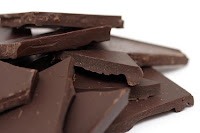Photo courtesy of www.olympic.org
Olympians are in top shape and the best athletes in the world. With Olympic fever going around who wouldn't take advice from them? Even though they are professional athletes, you can definitely apply these tips to your daily life.
1. Get a workout partner.
"After spending so much time by myself on the ice in the past, I love working out with friends now," says Nancy Kerrigan who is a former professional figure skater and two-time Olympic medalist. For Lauren Wenger, a current member of USAs women's water polo national team and Olympic silver medalist, working out with a friend motivates her to work harder. She says, "When I see a teammate working hard, it pushes me that much more."
2. Write is down.
Often you can't remember what you did in the gym last week. Heather O'Reilly, a member of the U.S. Women's National Soccer Team and two-time Olympic gold medalist says, "if I don't bring a sheet with my workouts on it, I end up wasting time and not being as efficient." You can write down before you go to the gym what you plan to accomplish and track it as you go along. O'Reilly says that she gets a sense of accomplishment when she sees that she has completed a workout.
3. Schedule it.
When you are an elite athlete, there is no choice but to schedule workouts. Krisit Yamaguchi, a former figure skater and Olympic gold medalist, says that it is important to schedule exercise. She says, "As a busy mom I can find 100 different things to do instead of working out. If I don't say, OK on this day, I will work out for at least 20 minutes, it won't happen." Exercise should be treated like a priority and if you schedule it into your day, you can't make excuses.
4. A boring diet is OK.
"Every single day, no matter where I am, I always eat one pack of instant oatmeal with a huge scoop of peanut butter for breakfast. It keeps me fueled and gives me enough energy for morning practice," says Wenger. Why fix something if it isn't broken? If it works for you, stick to it.
5. Rest doesn't always mean being a couch potato.
Just because you are taking a day off from working out doesn't give you an excuse to be a couch potato. "Staying active on down days actually makes me feel better the rest of the week," says Erin Hamlin who is a two-time luge Olympian. "Doing something low key, like going for a walk or taking a light yoga class, gets the blood flowing and results in more productive training days." Chellsie Memmel, a former Olympic silver medalist in gymnastics says, "Walking on the treadmill or outside helps my muscles relax and loosen up."
6. Set goals.
"I always think of the goals I am working towards, like a gold medal at the Olympics, and it motivates me," says Angela Ruggiero who is a four-time ice hockey Olympic medalist. She says, "If you don't have something to work for, it's easy to get side-tracked." And she's right, you need something to work toward. It gives you a sense of accomplishment at the end and allows you to track your progress. Your goals don't have to be as high as winning an Olympic gold medal, make them realistic, such as completing a 5K. Tell someone who can hold you accountable and keep you on track. Going public can push you harder because who wants to be embarrassed by not accomplishing them?
7. Discover what works for you.
You need to enjoy what you are doing. If other people think it is weird, but it works for you, who cares!? "When I was training, I would take a 15-minute hot bath with a cup of Epsom salt and a cup of apple cider vinegar," says Kerrigan. She says that even though it may sound strange, it helped her bruises heal faster and muscles feel better almost instantly. O'Reilly wears recovery sleeves for an hour or two after she works out and sometimes at night because she says it helps with the swelling.
8. Take vitamins.
When traveling to different countries, food options can vary drastically. "I recently started taking a variety of vitamins like vitamin C, calcium and fish oil, because fresh, nutrient-rich foods are hard to come by in some places," says Hamlin. Multivitamins can be a good back-up plan, if you think you diet may be lacking in nutrients, but make sure to talk to your doctor first.
9. Keep hydrated.
Obviously water is essential for survival, but it is also important to keep yourself energized. O'Reilly says, "I wind up drinking more throughout the day when I carry around my water bottle, which keeps me going." For Natasha Hastings, a USA Track & Field athlete and Olympic gold medalist, water is important to her for more than just hydration. "Other than drinking water for sports, I've always admired my grandmother and mother's great skin and I swear it's because they drink a lot of water!"
10. Diversify you fitness regimen.
You may think that Olympic athletes spend all of their time focusing on one sport, but adding another active hobby can be beneficial for them. "I've dabbled in golf and am always up for trying anything new," says O'Reilly. She plays badminton and squash, for a bit of a change in her usual routine. Wenger gives credit to her once-a-week yoga practice to her improved weekly training. She says, "it strengthens my muscles and loosens my joints." Changing up your usual habits can also make exercise more exciting, it is supposed to be fun after all!
Source:
Cuffey, Abigail. "10 Fitness Tips from Olympians." Woman's Day. N.p., n.d. Web. 27 July 2012. <http://www.womansday.com/health-fitness/10-fitness-tips-from-olympians-124486>.





































